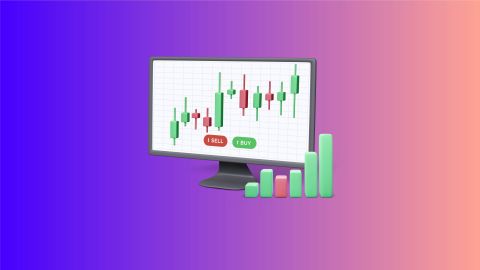Most investors rely on fundamental analysis to measure a stock's intrinsic value by examining a company's financial statements and conducting a thorough review of the economic and financial situations surrounding the company. Among several types of examinations lies the analysis of average cost, which shows a company’s total production cost per unit of output.
Let’s understand the definition of average cost, see why companies calculate it, and learn how to analyse it.
What is average cost for business organisations?
The average cost for business organisations refers to the total cost of production per unit of output. It is calculated by dividing:
- The total cost of production (including fixed and variable costs)
by - The total quantity of output produced
Let us see its formula:
Average Cost = (Total cost of production (TC))/(Total Quantity (TQ))
What are the primary components of the average cost?
| Total cost or Total Cost of Goods Sold (COGS) | Fixed cost | Variable cost |
|
|
|
Why do business organisations calculate the average cost?
Average cost analysis helps businesses determine the optimal level of production to:
- Minimise costs and
- Maximise profitability
By comparing average cost with revenue, businesses can decide whether to increase, decrease, or maintain production levels. Furthermore, an understanding of average cost helps in:
- Setting product prices. Usually, businesses price their products above average cost to generate profits in the long run.
- Identifying cost-saving opportunities.
- Monitoring changes in average cost over time. It indicates:
- A decreasing average cost suggests increasing efficiency
- An increasing average cost signals rising input costs
Why should investors analyse the average cost of a company?
Several investors perform fundamental analysis of a company by analysing its average cost. It primarily includes evaluating a company's:
- Financial health
- Operational efficiency, and
- Profitability potential based on its average cost data
Let us understand what you can infer from this metric:
How capable is the company of generating profits in the long run?
Average cost analysis allows you to assess the company's ability to generate profits from its core operations. By comparing average costs with revenues, you can evaluate the company's profit margins. This analysis helps you ascertain whether it operates efficiently enough to remain profitable in the long run.
Can the company produce goods at a lower cost?
An analysis of the average cost helps you understand how efficiently the company utilises its resources in production. A lower average cost relative to industry peers indicates superior operational efficiency. It suggests that the company can:
- Produce goods or services at a lower cost
- Generate higher profits
Does the company have a cost advantage?
By comparing a company’s average cost with its competitors, you can understand a company's competitive positioning within the industry. A lower average cost relative to competitors gives the company a cost advantage, which enables it to:
- Offer competitive prices or
- Invest in innovation and expansion
Is the company facing cost pressures?
High or rising average costs relative to revenues indicate:
- Potential inefficiencies or
- Cost pressures within the company
By analysing trends in average cost over time, you can assess the company's ability to manage costs effectively.
Should I invest in the company?
By incorporating average cost analysis into your investment research, you can identify companies with:
- Strong fundamentals
- Competitive advantages, and
- Growth potential
This kind of analysis enhances the likelihood of achieving favourable investment outcomes.
How to perform fundamental analysis using average cost?
Let us understand this process step-by-step through a hypothetical example:
- Say you are analysing a company called "XYZ Ltd.”
- It is a leading textile manufacturer in India.
Step 1: Gather financial statements
Obtain XYZ Ltd.'s income statement and balance sheet. Assume we have collected the following financial data for the fiscal year ending March 31, 2023:
- Total revenue: Rs. 50,00,000
- Total cost of goods sold (COGS): Rs. 35,00,000
- Total quantity of output produced: 1,00,000 units
Step 2: Calculate average cost
Calculate the average cost per unit produced by XYZ Ltd. using the formula:
Average Cost = (Total Cost of Goods Sold (COGS))/(Total Quantity of Output Produced)
Average Cost = (Rs. 35,00,000)/1,00,000
So, the average cost per unit produced by XYZ Ltd. is Rs. 35.
Step 3: Compare average cost trends (intra-comparison)
- Analyse trends in XYZ Ltd.'s average cost over multiple periods.
- Let's say that in the previous fiscal year (FY 2022), the average cost per unit was Rs. 32.50.
- This indicates a slight increase in average cost from the previous year to the current year.
Step 4: Benchmarking (inter-comparison)
- Compare XYZ Ltd.'s average cost with industry peers or competitors.
- Suppose the average cost per unit for other textile manufacturers in India ranges from Rs. 30 to Rs. 40.
- XYZ Ltd.'s average cost of Rs. 35 falls within this range
- It suggests that XYZ Ltd. is competitive in terms of production costs.
Step 5: Evaluate profit margins
Calculate XYZ Ltd.'s profit margin by comparing revenues with total costs, including average cost. Let's calculate:
Profit Margin = (Total revenue - Total cost of goods sold (COGS))/(Total revenue) x 100
Profit Margin = (50,00,000 - 35,00,000)/50,00,000 x 100
Profit Margin = 30%
Assume that most companies operating in the textile sector have a profit margin between 15% and 28%. We can conclude that the profit margin of XYZ Ltd. of 30% is healthy, and making investments in the company can be a profitable option.
Step 6: Evaluate revenue and pricing strategies
- Lastly, assess XYZ Ltd.'s revenue and pricing strategies in relation to its average cost.
- If XYZ Ltd. sells its products at a price above the average cost of Rs. 35 per unit, it can generate profits.
Conclusion
Average cost refers to the total cost per unit of output. We can arrive at this figure by dividing the company’s total cost of production by its total output. Several investors perform fundamental analysis of a company using its average cost. It provides insights into a company’s profitability, operational efficiency, and competitive position.
Are you looking to expand your stock market knowledge? Learn about the average directional index, which is a type of technical indicator and understand the meaning of average price.




